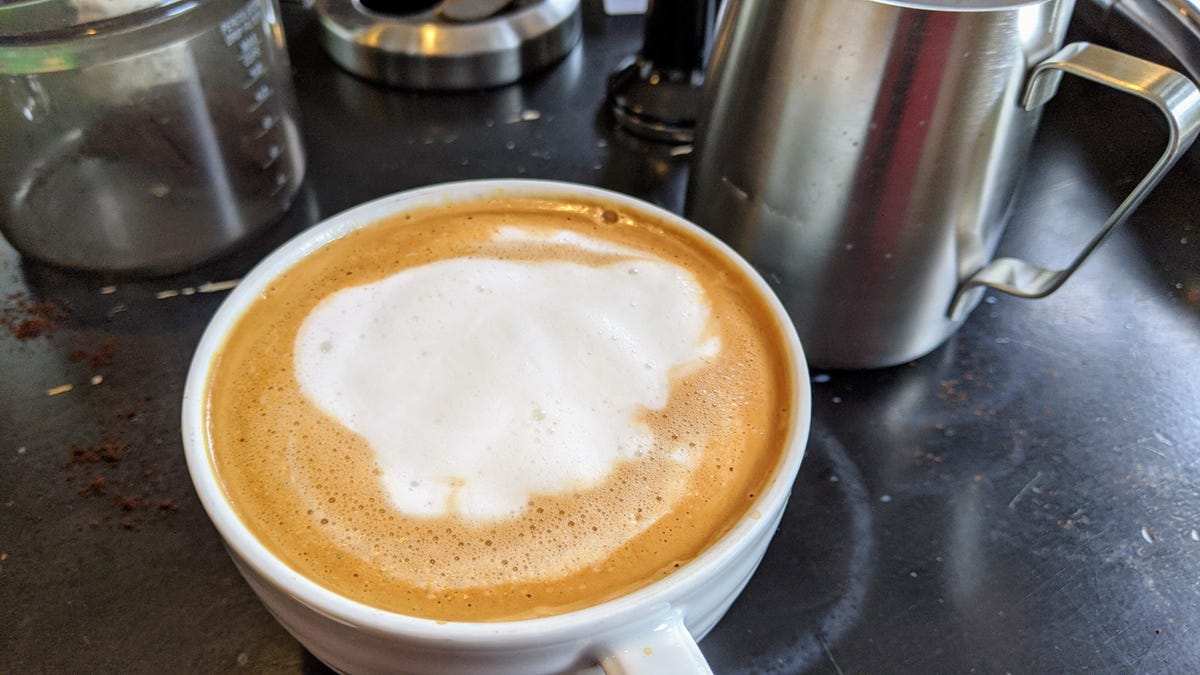My process for evaluating a home coffee maker is similar to how I test standard drip coffee makers. First, I hand wash and dehydrated all removable parts and accessories. For most espresso machines, this includes the filter basket, metal portafilter inserts, water reservoir, etc. I then run one brew cycle using just warm water to rinse off any manufacturing residue.
Most automatic coffee machines, apart from elegant fully automatic models, do not have an integrated coffee grinder and I prefer to test coffee machines with freshly ground coffee, not pre-ground, so I will buy my own grinder: the Breville Pro Smart Grinder. I chose this conical burr grinder for two reasons. First, it is calibrated more for espresso than for drip or other brewing styles. This means that it produces coffee beans that are ground quite finely. Second, its grind is consistently uniform. Both factors are critical to a proper espresso brewing process.
To make shots, I start with the suggested method outlined in the machine’s instruction manual. This usually includes the amount of ground coffee I expect for the shot, along with any guidelines for fineness. Likewise, I follow the tamping instructions (lithe, medium, or massive) if the manual includes them.
Whenever possible, I make double shots of espresso during all my test runs. I make sure to record the weight of the grounds I utilize, as well as the weight of the espresso for each shot I pull. This data, along with the readings from my portable refractometer, allows me to calculate two crucial percentages: total dissolved solids and percent extraction.
As with any coffee brew, the ideal degree of extraction for espresso is between 18% and 22%. This will give you a balanced cup of coffee, assuming you extract the coffee compounds from the ground coffee evenly and efficiently (both flavor and caffeine).
There are few home coffee machines that can brew high-quality shots. This one was pulled from the Breville Barista Express.
If you over-extract, you risk washing out the unpleasant flavors (bitterness) from the good. On the other hand, under-extracted beers tend to have undeveloped flavors. The lack of sugar and other caramelized organic chemicals means these shots will taste sour, feeble, and watery.
Unlike a cup of filter coffee, barista-quality espresso should be concentrated. While a great drip typically has a TDS percentage of 1.3% or 1.4%, a great espresso has a much higher percentage. For example, the Breville Barista Express produced shots with a TDS percentage as high as 12.4%.
The shots I pulled were balanced, with an extraction of 18.6%. The test coffee beans I utilize are the same variety I utilize in standard espresso machines – Costco Kirkland Colombian. This is a medium-dark roast, also suitable for making espresso.
Many coffee makers have frothing nozzles for frothing milk. The Breville Bambino makes frothing milk especially effortless.
Finally, I try my hand at frothing milk using any coffee machine with a steam nozzle. I record the overall experience of using the steam wand, whether the process is quick, arduous, or somewhere in between.

Frothed milk can be used to prepare espresso-based drinks such as latte or cappuccino.
